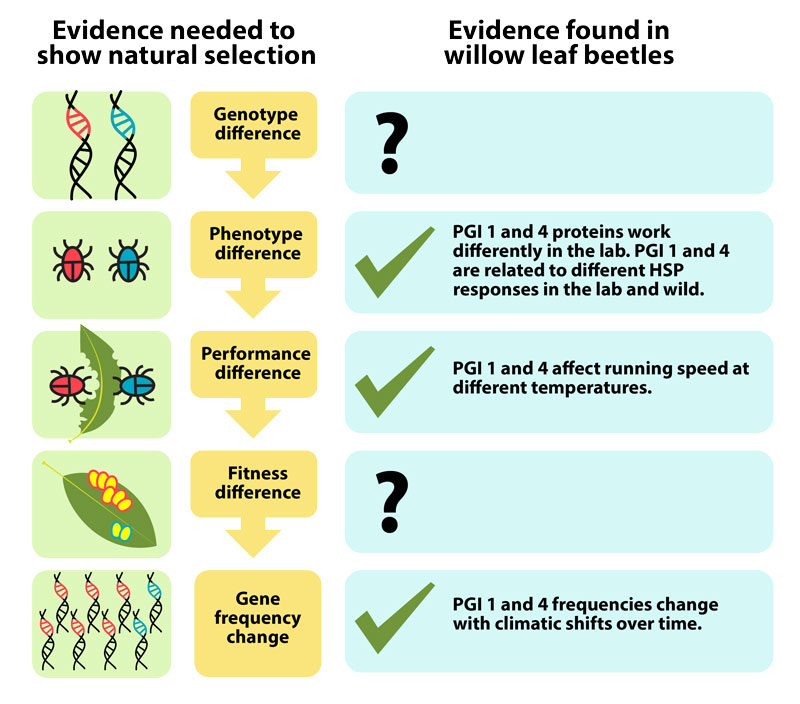
To find out how PGI affects the entire organism, Elizabeth and Nathan put their beetles to the test with a physical challenge: a footrace. Running performance is likely correlated with fitness, because male beetles compete by racing each other to find mates. Based on Nathan and Elizabeth’s original hot/cold hypothesis, one might guess that PGI 1-1 beetles (the genotype hypothesized to be cold tolerant) would be the winners (run fastest) at a cold temperature, and PGI 4-4 beetles would prevail in the heat, with PGI 1-4 beetles crossing the finish line in between. While some results aligned with that expectation, others were at odds with it. In particular, the team found that, for beetles of different genotypes, exposure to extreme heat had many of the same effects as exposure to extreme cold! For example, in nature and after a single exposure to a very hot or very cold temperature, beetles carrying the PGI-1 gene version were the fastest runners. But after multiple exposures to extreme temperatures in either direction, PGI 4-4 beetles were the footrace champions.
These observations suggested a modification of Elizabeth and Nathan’s original hot/cold hypothesis. Perhaps, PGI-1 is the “race car” version of the PGI gene and PGI-4 is the “jeep” version. The idea here is that PGI-1 is the more finely tuned allele, performing better under ideal, cool circumstances but requiring lots of energy to produce HSPs to maintain that efficiency, while PGI-4 might be a bit slow and inefficient but doesn’t waste as much energy on HSPs. That would help explain the outcome of the running experiments. Beetles with PGI-1 were the “race cars,” speeding ahead when the temperature was normal or after a minor challenge. But when things got really tough, and the beetles had to contend with many stresses, beetles with PGI-1 ran out of gas, and PGI 4-4 beetles, which don’t waste a lot of energy on HSPs, blew by them.
The race car/jeep hypothesis also explained all of Nathan and Elizabeth’s previous observations about the temperature sensitivity of the different PGI genotypes — if it’s the case that the cooler areas that beetles inhabit in nature are close to their “ideal” environment and the warmer areas constitute a “stressful” environment. As warm-bodied mammals, we are primed to think of cold temperatures as stressful, but for these insects, the opposite seems to be true: heat can cause them to burn through energy stores quickly and favor thrifty genotypes (in this case, PGI 4-4). Experiments on running speed supported the idea that PGI is under natural selection — though not quite in the way Elizabeth and Nathan had originally thought.
Get tips for using research profiles, like this one, with your students.

